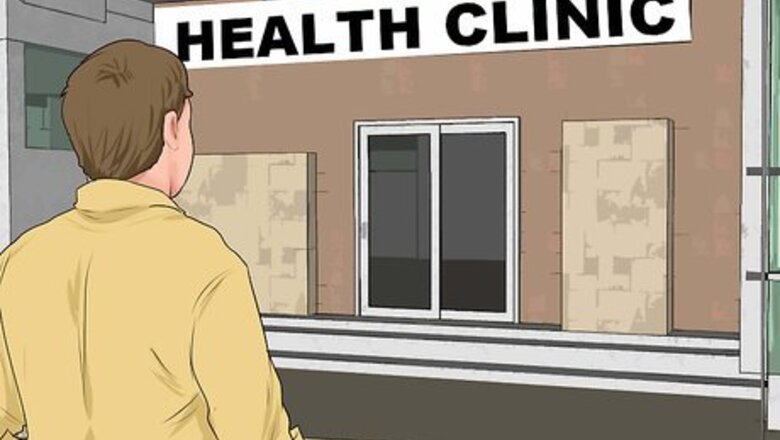
views
Identifying Symptoms
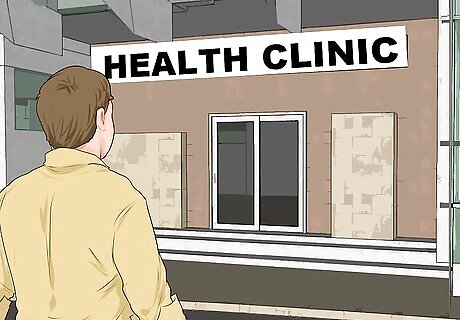
Talk to your doctor or visit a health clinic to get tested. Some STDs have no symptoms and can only be detected and diagnosed with a test. If you are concerned about STDs, the best thing to do is to get tested. Most states have laws that allow anyone over the age of 13 to get tested for STDs without parental consent. To find out more about getting tested for STDs, you can either talk with your family doctor or visit a health clinic, such as Planned Parenthood. Some common types of STD tests include: Urine test. Your doctor may request a urine sample to determine whether you have chlamydia and gonorrhea, the two most common STDs. You will urinate in a cup and then the doctor will send the cup to the lab for tests.. Blood sample. A blood sample can show whether you have syphilis, herpes, HIV, and hepatitis infections. A health care worker will prick you with a needle to take some blood and run the tests. Pap smear. For individuals with vaginas who do not show symptoms, this is the only way to detect human papillomavirus. If your pap smear shows unusual changes, a DNA test can reveal HPV. This test is only available for those with vaginas. There is currently no reliable way to test HPV in those without vaginas or in other orifices. Swab test. A swab of an infected area can determine if you have trichomoniasis. Your healthcare provider will take a swab of cotton and rub it on the infected area, and send it to the lab for tests. Since only 30% of people with trichomoniasis develop symptoms, getting tested is often the only way of knowing if you have it. Swab tests can also be used to test for chlamydia and gonorrhea as well as herpes.
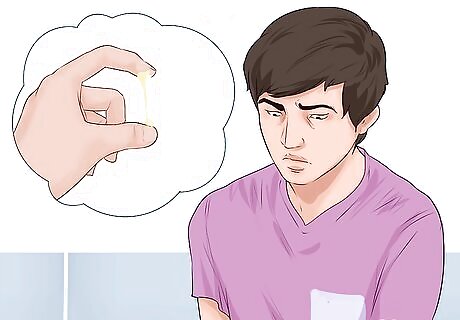
Note any difficulty with urination and any unusual discharge. The color, texture, and smell of discharge can help identify the STD contracted as well as pain during urination. Only you know your body, but if you think you are experiencing unusual discharge or urination, that could be a sign of: Gonorrhea in females and males with increased discharge from genitals (usually white, yellow, or greenish) or burning sensation during urination. Those with vaginas may also experience menstrual irregularities and swelling of the vulva. Four out of five women and one out of 10 men who have gonorrhea do not have symptoms. Trichomoniasis may be present in both females and males with burning urination or in females with unusual vaginal odor and discharge (clear, white, or yellowish). However, about 70% of infected people do not have any signs or symptoms. Chlamydia may be present in females and males with discharge or painful urination. Those with vaginas may also experience abdominal pain and the urge to urinate more than usual. Just keep in mind that 70-95% of women and 90% of men who have chlamydia will not exhibit symptoms. Bacterial vaginosis in individuals with vaginas with milky discharge and a fishy odor.
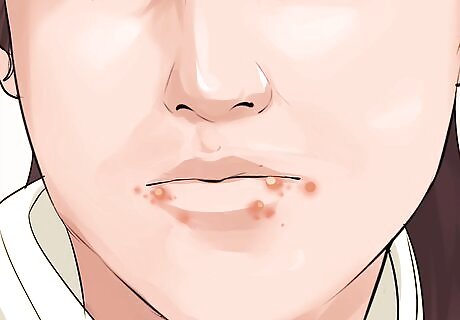
Pay attention to rashes and sores. Rashes and sores in specific parts of the body may indicate that you have an STD. Pay extra close attention to any rashes or sores on your genitals or mouth, as these are more commonly associated with STDs. If you experience an outbreak of some kind, see a doctor or visit a health clinic as soon as possible to get a diagnosis. Painless sores may indicate that either a male or female has contracted syphilis in its primary stage. These sores (called chancres) usually appear near the genital areas and they can appear about three weeks to 90 days after infection. Painful blisters or sores in genital areas or the mouth may indicate that either and male or female has contracted herpes. These blisters can appear as early as two days after contraction and last one to two weeks. Genital warts can indicate that either a male or female has contracted human papilloma virus. They usually appear as a small bump or groups of bumps in the genital area. They can be small or large, raised or flat, or shaped like a cauliflower. HPV is the most common sexually transmitted infection and nearly all sexually active people get infected with HPV at some point in their lives. In most cases, HPV goes away on its own, but when it doesn't, certain types of HPV can cause cervical cancer in individuals with a vagina / uterus.

Observe flu-like symptoms. Some STDs are difficult to recognize because the symptoms are similar to the common flu. They include: a cough or sore throat, a runny or stuffy nose, the chills, fatigue, nausea and/or diarrhea, a headache, or a fever. If you are experiencing flu-like symptoms, talk to your doctor to find out if you have the flu or if you might have an STD. For example, exhibiting flu-like symptoms after sex can be indicative of syphilis or HIV in either men or women.

Check for swollen glands and a fever. Sometimes STDs can cause swollen glands and a fever. For example, if your glands are tender or feel painful when you press on them and you are experiencing a fever, it may be a sign of the herpes virus. Most often, the glands are swollen near the site of infection, and the glands in the groin area are often swollen with genital infections. If you do have herpes, your symptoms will likely appear two to 20 days after infection.
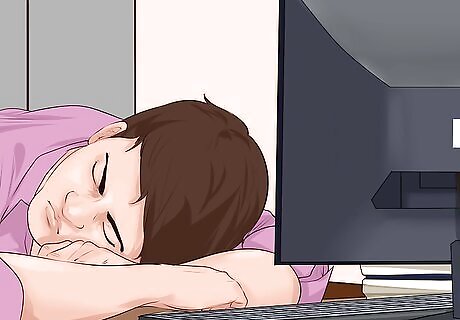
Determine if you are experiencing fatigue. There are many reasons that you may be experiencing fatigue. However, if you are experiencing fatigue in combination with a loss of appetite, joint pain, abdominal pain, nausea, or jaundice, it may be a sign that you have contracted hepatitis B. About one out of two adults who have hepatitis never have symptoms, but if they do appear, they will occur between 6 weeks and 6 months after infection.
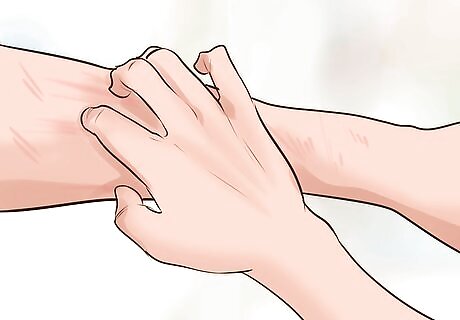
Identify abnormal itching. Some STDs may cause you to feel an itching or burning sensation in your genital region, so take note if you experience this symptom. For example, itching or irritation in the penis could be a sign of trichomoniasis in individuals with a penis or bacterial vaginosis in individuals with a vagina. Chlamydia can also cause itching, especially of the anal area. If trichomoniasis symptoms develop, they will occur in three to 28 days. If bacterial vaginosis symptoms develop, they will occur anywhere from 12 hours to five days. Bacterial vaginosis can also be contracted through other means besides sexual contact (such as using a copper coil as a contraception means, smoking, or taking frequent bubble baths), therefore there is debate on whether it should be classified as an STD.
Treating and Preventing STDs
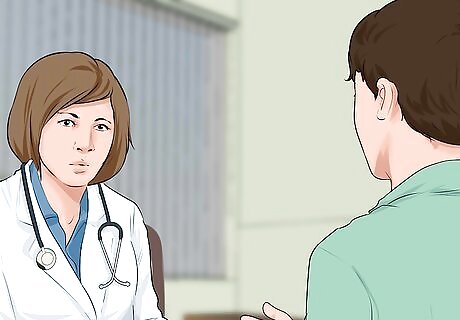
See your doctor. If you suspect that you have a sexually transmitted disease, make an appointment with your doctor right away or visit a health clinic. Prompt treatment of STDs is crucial to help prevent long-term effects from disease and spreading it to others. When left untreated, some STDS can cause serious long-term health problems including hair loss, arthritis, infertility, birth defects, cancer, and rarely, even death.

Follow instructions for treating your infection. Some STDs can be treated with antibiotics while others cannot be cured at all. Regardless of your situation, it is important to follow your doctor’s instructions for how to cure or manage your condition. If you receive a diagnosis for an STD, your doctor will advise you on your treatment options and give you information on how to avoid spreading your STD to other people. Your healthcare provider may prescribe medications to treat your condition or at least to lessen the severity of your symptoms. There is no cure for HIV/AIDS, Hepatitis B, or herpes. However, there are treatments available to help mitigate symptoms.

Do everything you can to prevent the spread of STDs. There are several ways to decrease your chances of contracting an STD infection. Make sure that you choose the method that works best with your lifestyle. The methods you can use to help prevent contraction of an STD include: Abstain. The only sure way to ensure that you do not contract an STD is to abstain from oral, vaginal, and anal sex. Use protection. If you do engage in sexual activities, use a latex condom to minimize the possibility of contracting an STD. Be monogamous. One of the most reliable ways to avoid STDs is to be in a mutually monogamous relationship. Have an open conversation with any partner about whether they have been tested before engaging in any activities. Get vaccinated. For hepatitis B and HPV, you can be vaccinated. This helps ensure that you will not contract the diseases even if you do come into contact with them during sex. The hepatitis B vaccination is usually administer to infants at birth, but be sure to check. The HPV vaccination consists of 3-dose series of shots and will protect against the most common forms of HPV.




















Comments
0 comment